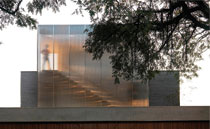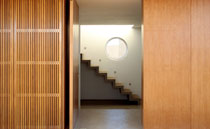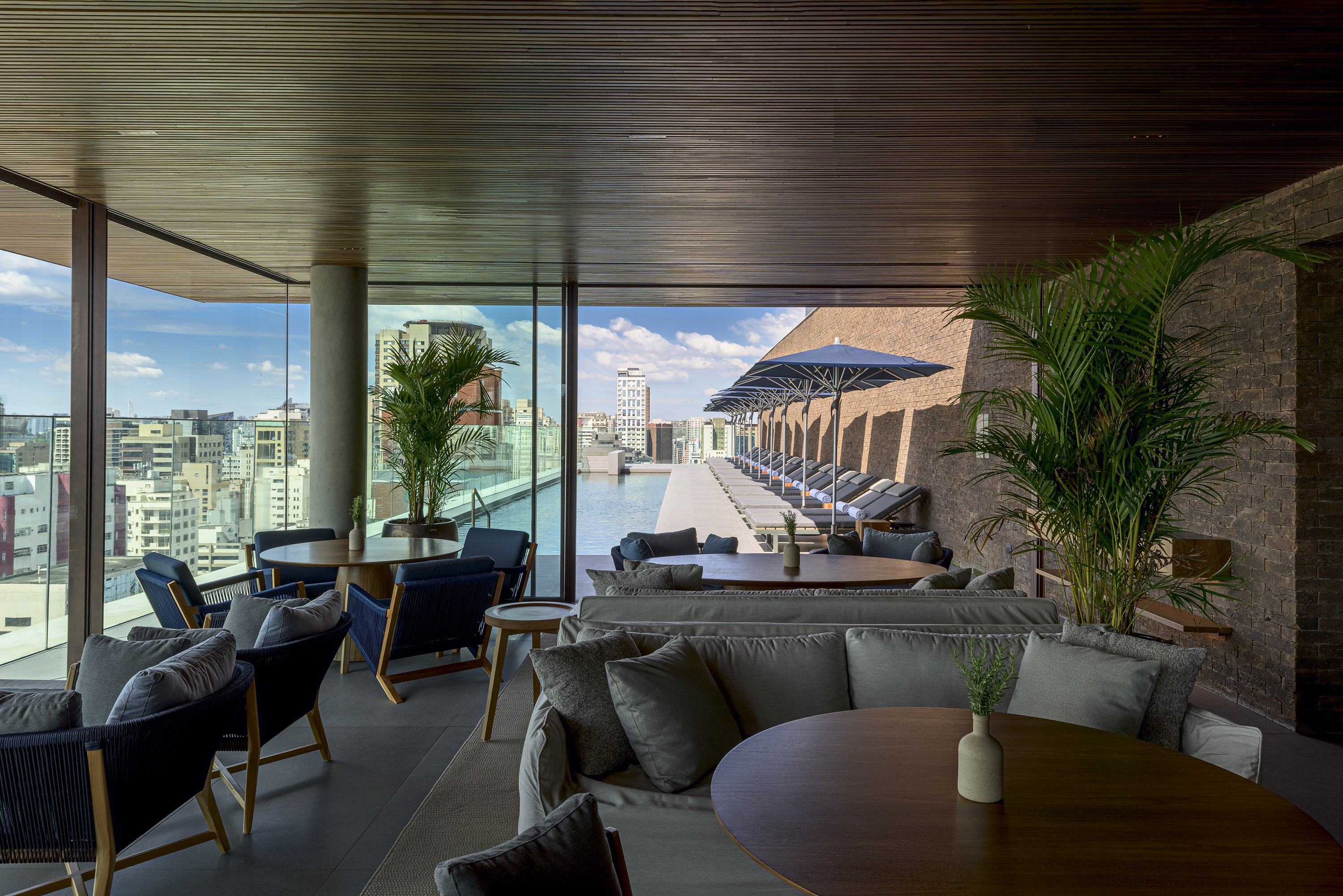Marcio Kogan report

Brazilian architect Marcio Kogan plays with space in a way that makes you think that if he ever gets bored, a second career as a movie set designer awaits.

See more of Corten House and C16H14O3 House by Marcio Kogan
Based in São Paulo, Kogan’s 20-strong firm continues to be busy with projects in every corner of Brazil. Of his four most recent offerings, three (the Corten House, Panama House and C16H14O3 House) are located in São Paulo while the fourth (the Osler House) is in Brasilia. (Photos of Corten House and C16H14O3 House are featured in our gallery, above.

See more of the Osler Houe and Panama House
Through all four projects, the box form – Kogan’s favourite motif – occurs time and again but in carefully nuanced combinations: precisely planed concrete boxes within boxes (a function of security concerns in São Paulo); stoned lined boxes on top of boxes; and timber slatted boxes that open outwards towards a slim-lined lap pool perhaps with no doors to mark inside or outside.
But there is, as our gallery shows, nothing hemmed in about these houses. Instead, the elegant economy to Kogan’s use of volumes translates to a very real sense of freedom. The result is airy, light-washed spaces that seem barely tethered to the ground, an apt escapist image perhaps for São Paulo’s congested megapolis.
We caught up with Kogan recently for a quick chat about life and architecture in his favourite city.
Receive our daily digest of inspiration, escapism and design stories from around the world direct to your inbox.
Ellie Stathaki is the Architecture & Environment Director at Wallpaper*. She trained as an architect at the Aristotle University of Thessaloniki in Greece and studied architectural history at the Bartlett in London. Now an established journalist, she has been a member of the Wallpaper* team since 2006, visiting buildings across the globe and interviewing leading architects such as Tadao Ando and Rem Koolhaas. Ellie has also taken part in judging panels, moderated events, curated shows and contributed in books, such as The Contemporary House (Thames & Hudson, 2018), Glenn Sestig Architecture Diary (2020) and House London (2022).
-
 The rising style stars of 2026: Zane Li, fashion’s new minimalist
The rising style stars of 2026: Zane Li, fashion’s new minimalistAs part of the January 2026 Next Generation issue of Wallpaper*, we meet fashion’s next generation. First up, Zane Li, whose New York-based label LII is marrying minimalism with architectural construction and a vivid use of colour
-
 The work of Salù Iwadi Studio reclaims African perspectives with a global outlook
The work of Salù Iwadi Studio reclaims African perspectives with a global outlookWallpaper* Future Icons: based between Lagos and Dakar, Toluwalase Rufai and Sandia Nassila of Salù Iwadi Studio are inspired by the improvisational nature of African contemporary design
-
 Top 25 houses of 2025, picked by architecture director Ellie Stathaki
Top 25 houses of 2025, picked by architecture director Ellie StathakiThis was a great year in residential design; Wallpaper's resident architecture expert Ellie Stathaki brings together the homes that got us talking
-
 Architecture director Ellie Stathaki's gift guide for urban explorers
Architecture director Ellie Stathaki's gift guide for urban explorersArchitecture & environment director Ellie Stathaki shares her tips and wishes for the perfectly curated 2024 gift guide for built environment enthusiasts - and beyond
-
 Studio mk27 and Marcio Kogan’s greatest hits: from voluptuous villas to relaxing retreats
Studio mk27 and Marcio Kogan’s greatest hits: from voluptuous villas to relaxing retreatsStudio mk27, led by Wallpaper* guest editor Marcio Kogan, is behind buildings that make us swoon; here are the best of the best
-
 How guest editor Marcio Kogan, during a visit to the movies, ‘discovered that something else exists in the world, real poetry’
How guest editor Marcio Kogan, during a visit to the movies, ‘discovered that something else exists in the world, real poetry’Marcio Kogan is a guest editor of Wallpaper* October 2024. In his dedicated section, we discover how the world of cinema’s loss was architecture’s gain when a feature film failed but a dream space creator rose from the ashes
-
 Marcio Kogan’s Studio MK27 celebrated in this new monograph from Rizzoli
Marcio Kogan’s Studio MK27 celebrated in this new monograph from Rizzoli‘The Architecture of Studio MK27. Lights, camera, action’ is a richly illustrated journey through the evolution of this famed Brazilian architecture studio
-
 Fasano Itaim brings the hospitality brand full circle back to São Paulo
Fasano Itaim brings the hospitality brand full circle back to São PauloFasano Itaim is the luxury Brazilian hospitality brand’s second outpost in São Paulo – and it just opened with a design by Studio MK27
-
 Flag House brings Brazilian modernism to Canada’s Whistler
Flag House brings Brazilian modernism to Canada’s WhistlerFlag House, Canada, by Studio MK27 wins Best Ski Retreat at the 2023 Wallpaper* Design Awards
-
 Marcio Kogan’s first resort celebrates tropical modernism in the Maldives
Marcio Kogan’s first resort celebrates tropical modernism in the MaldivesMarcio Kogan’s Patina Maldives, Fari Islands is the perfect luxury retreat that combines tropical modernist influences, a modest approach and sustainability; and it's the Brazilian architect’s first ever hotel
-
 Serge Cajfinger swaps Paris for a Bahia beach house by Marcio Kogan
Serge Cajfinger swaps Paris for a Bahia beach house by Marcio KoganBrazilian architect Marcio Kogan designs a dream house out of concrete blocks and a eucalyptus-stick pergola for Paule Ka founder Serge Cajfinger